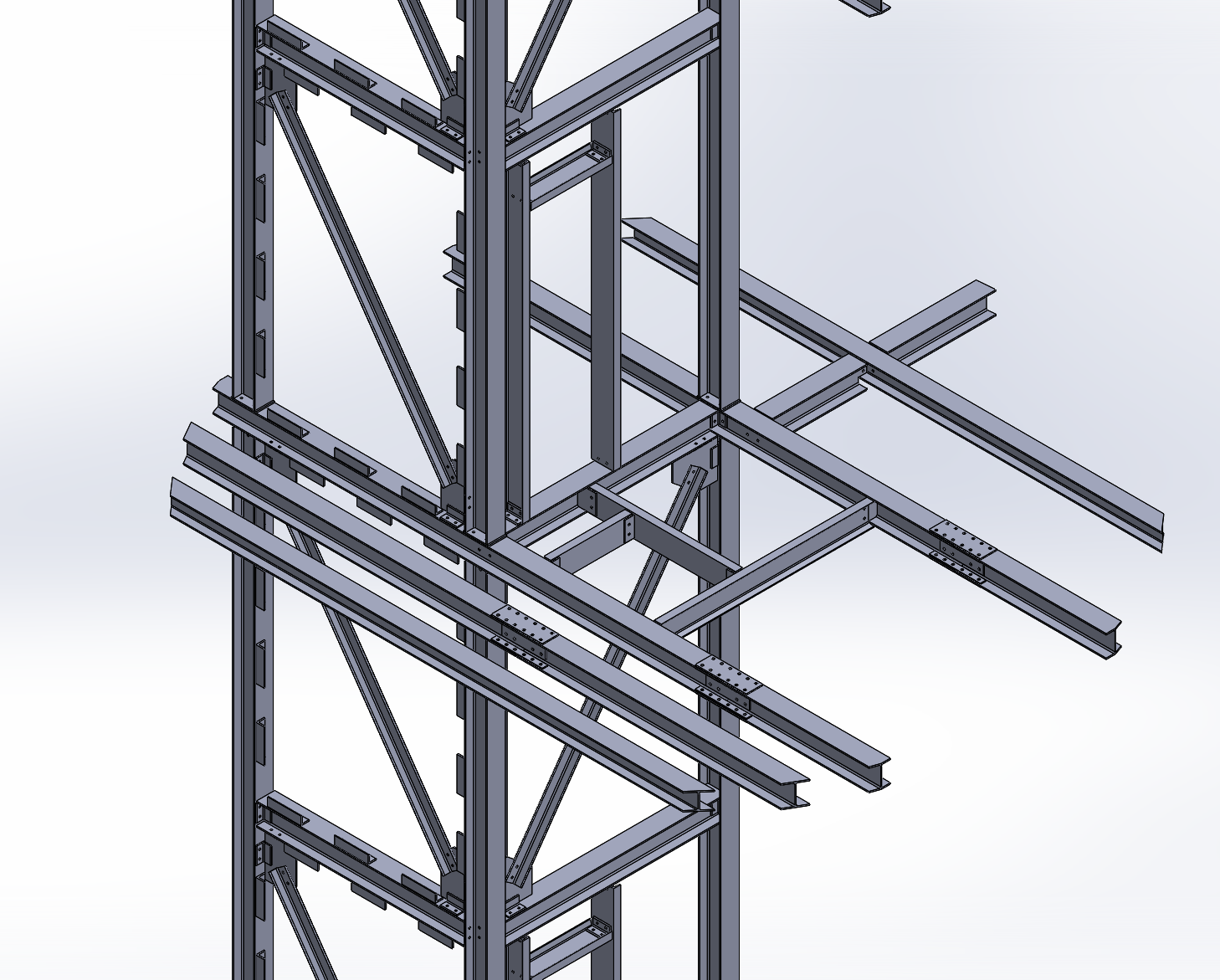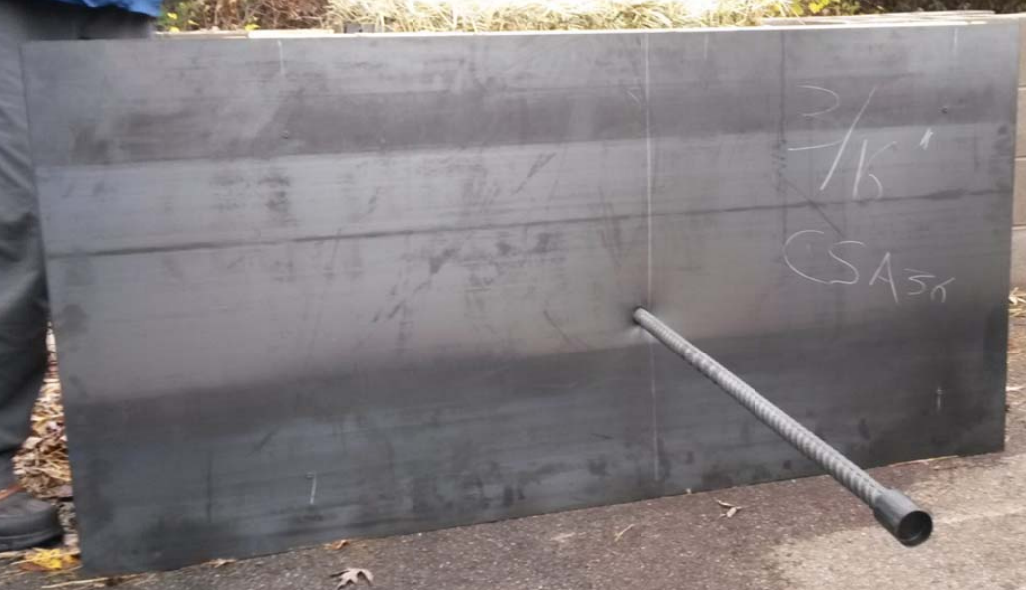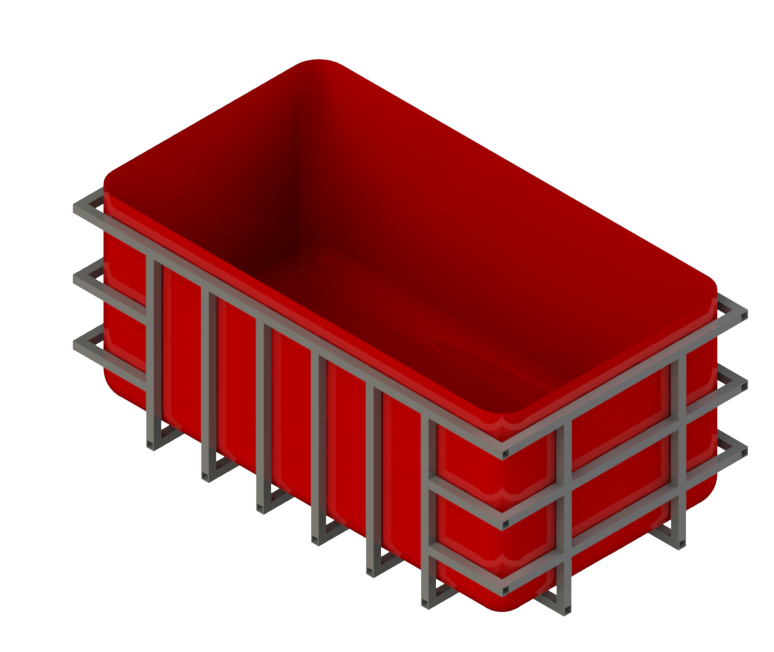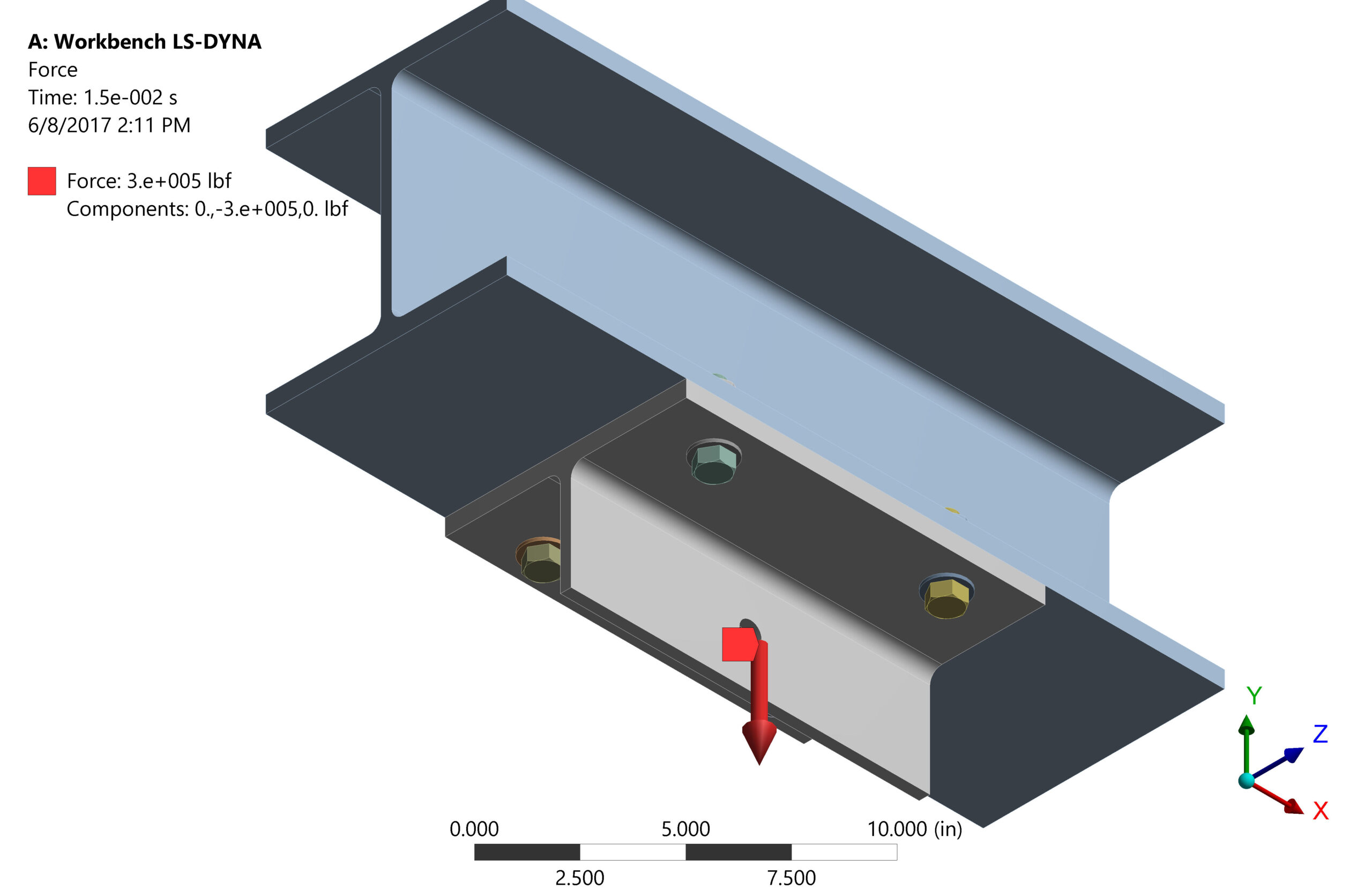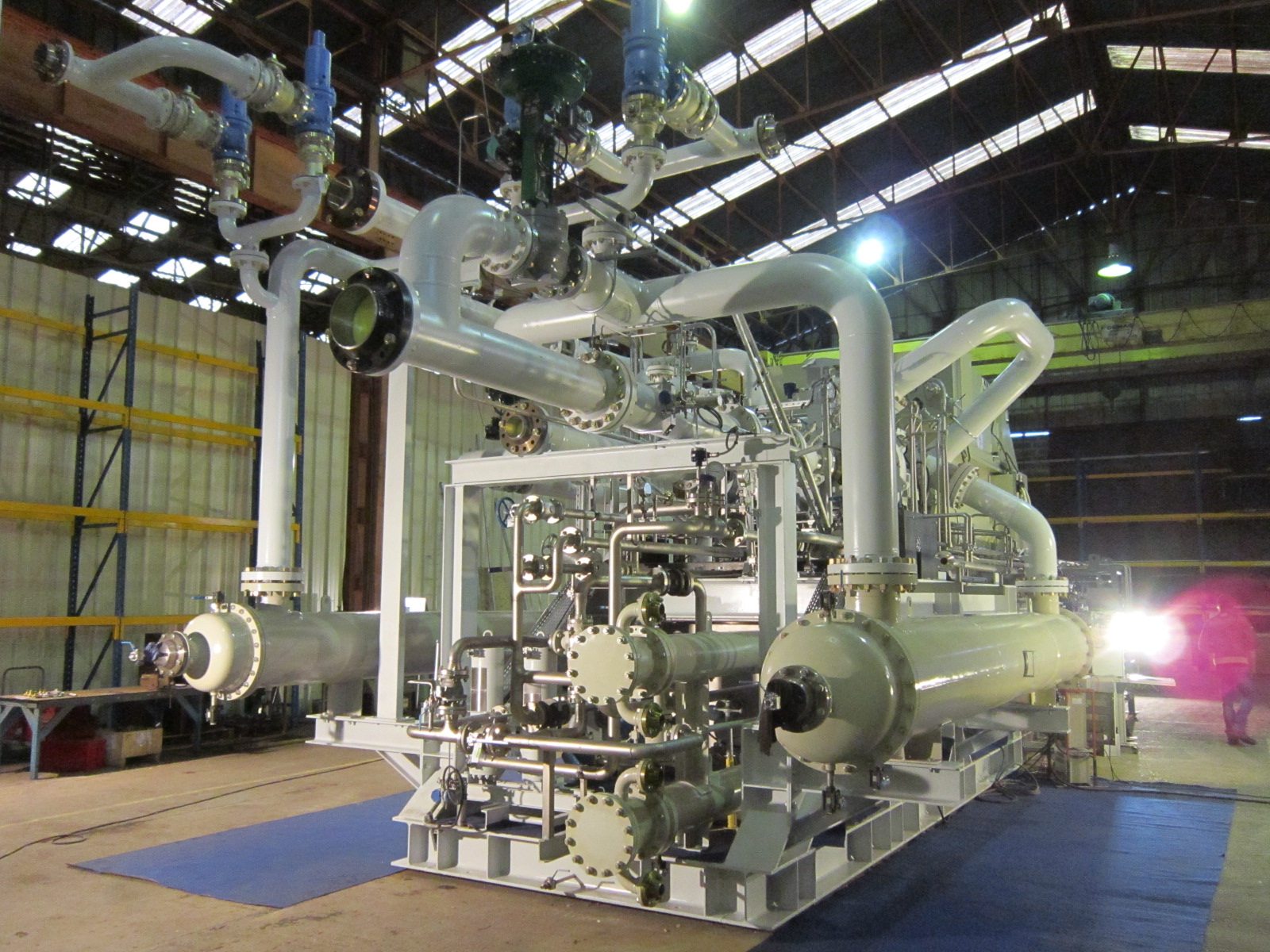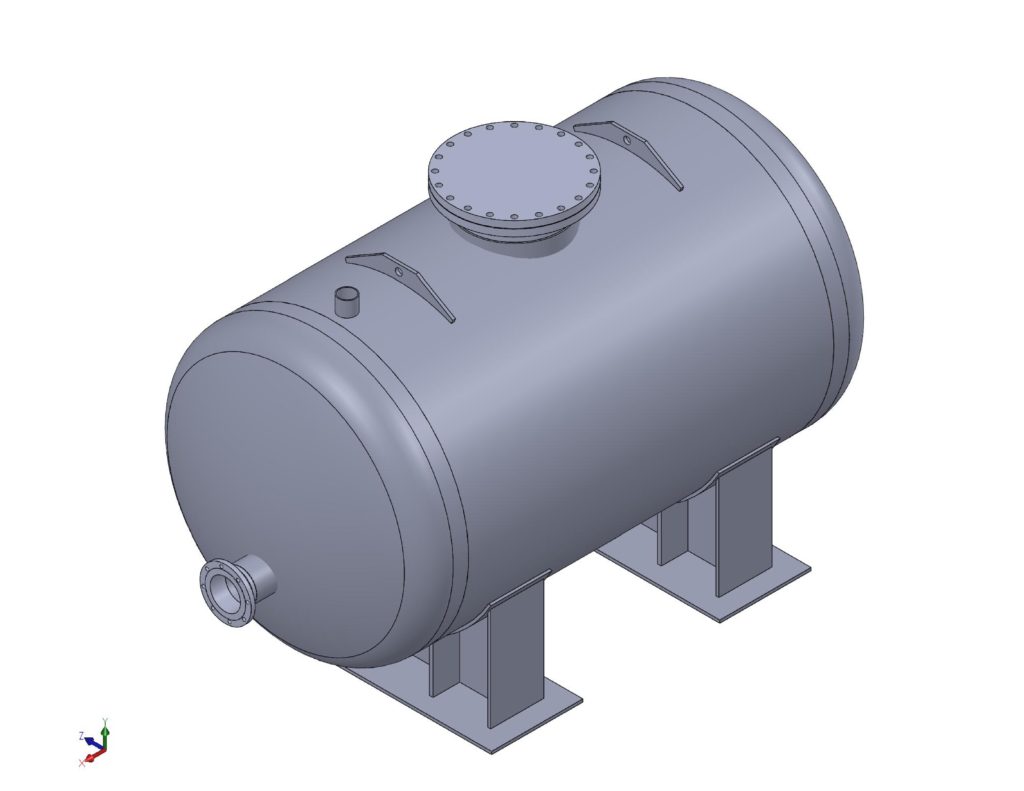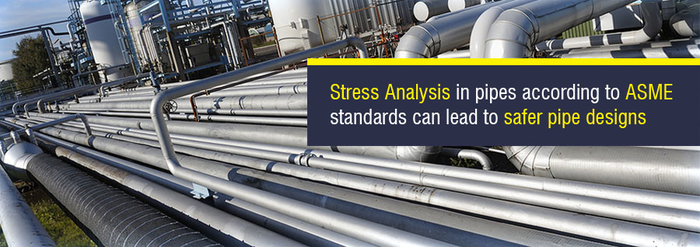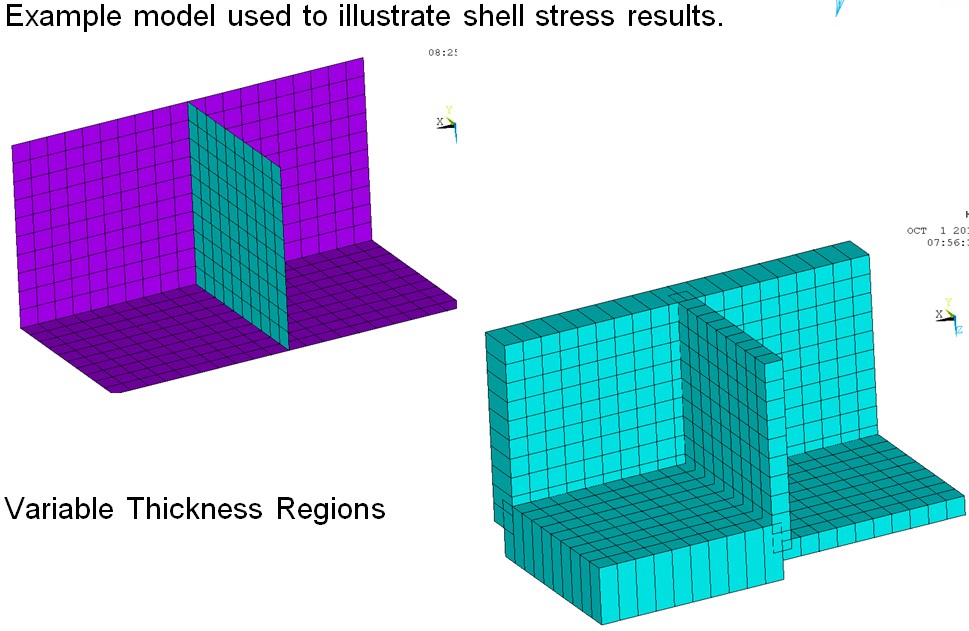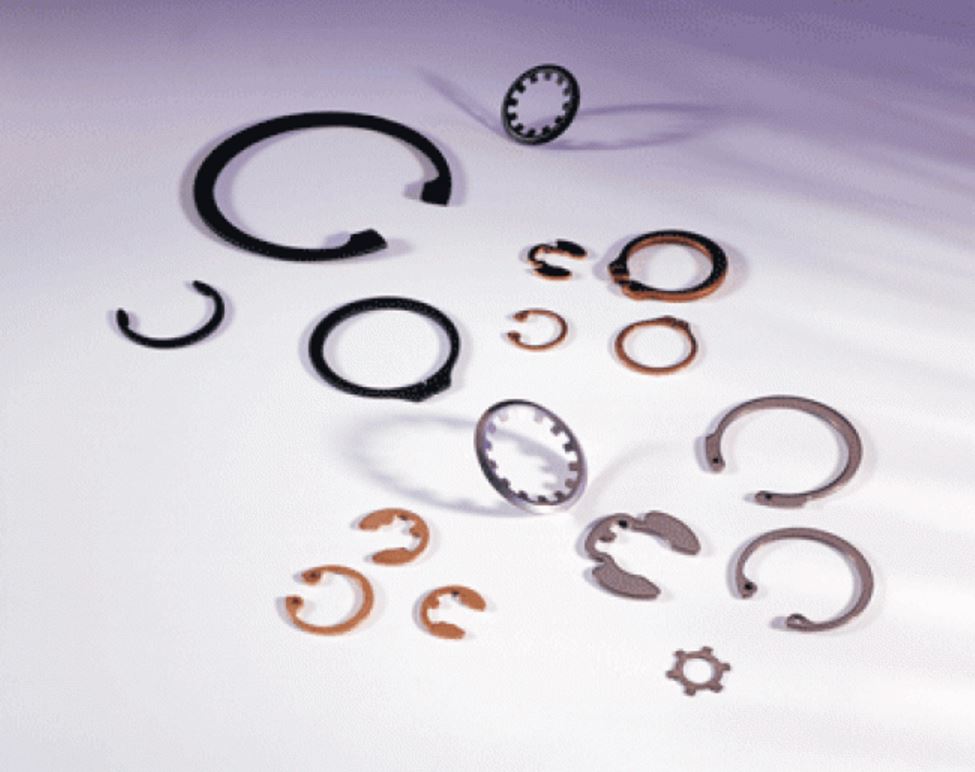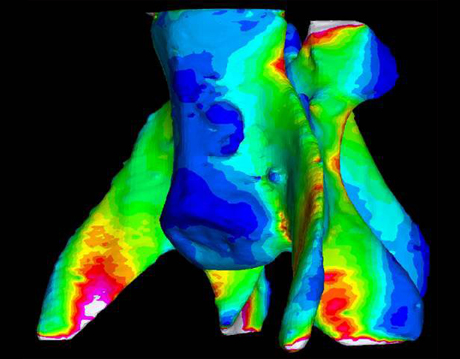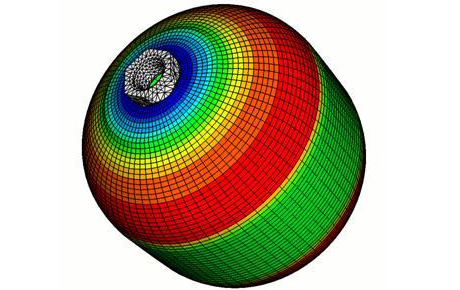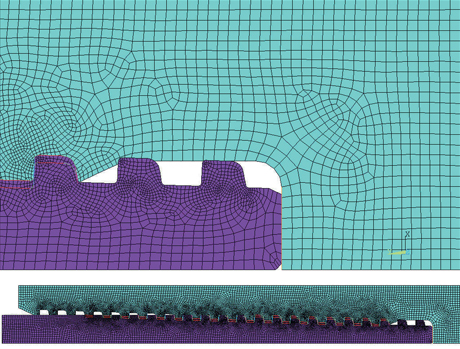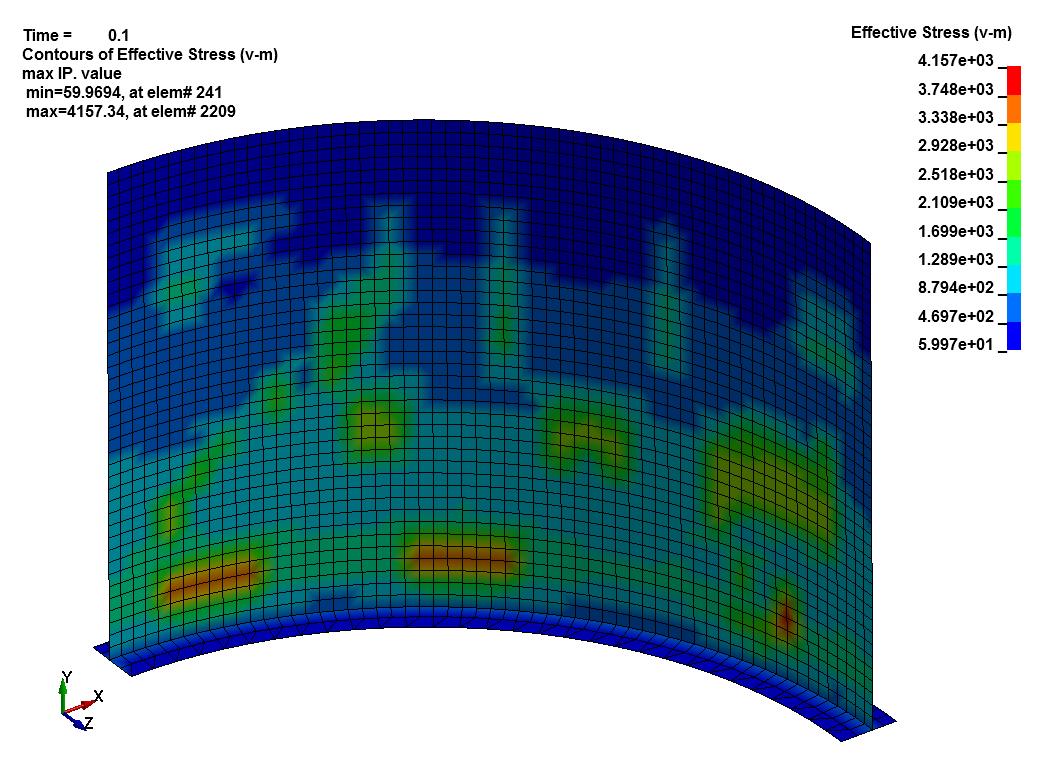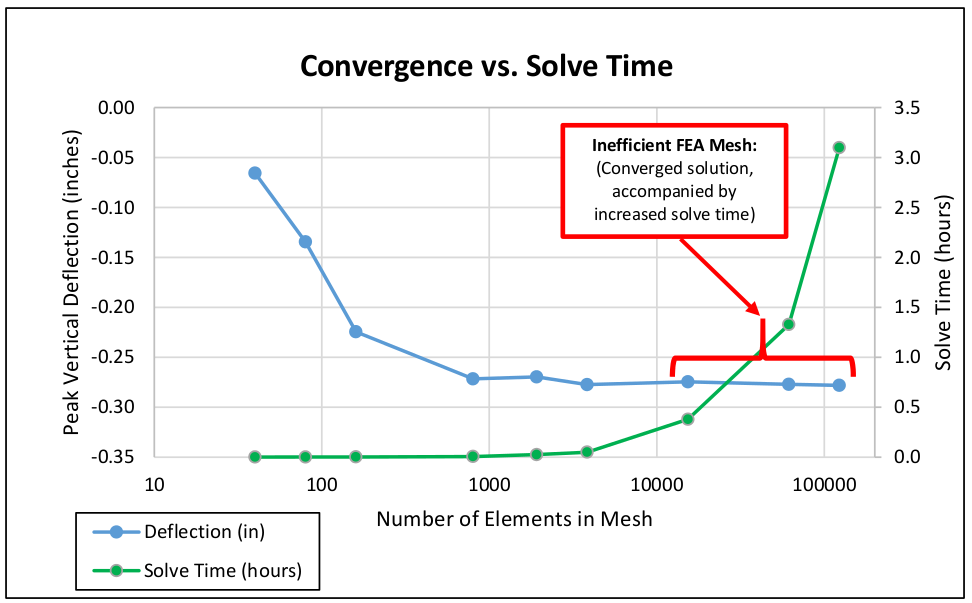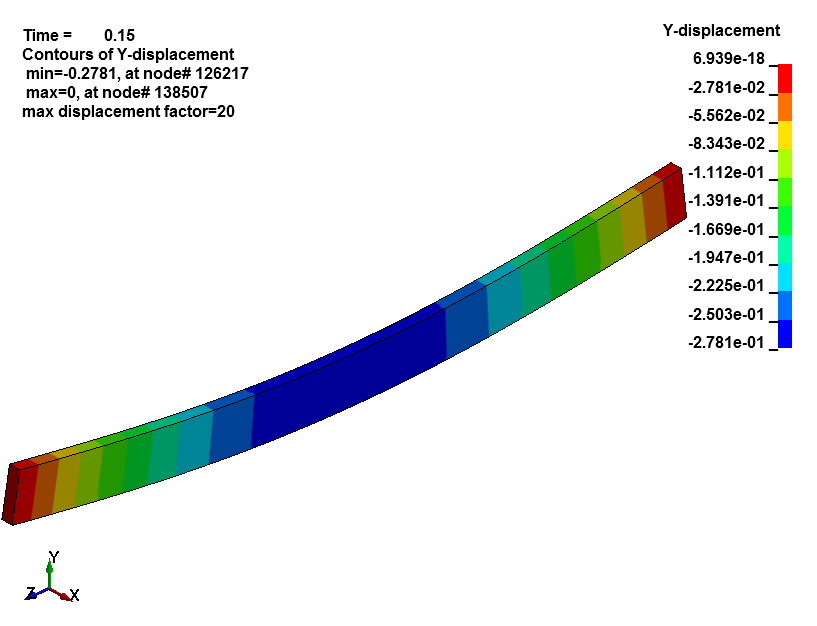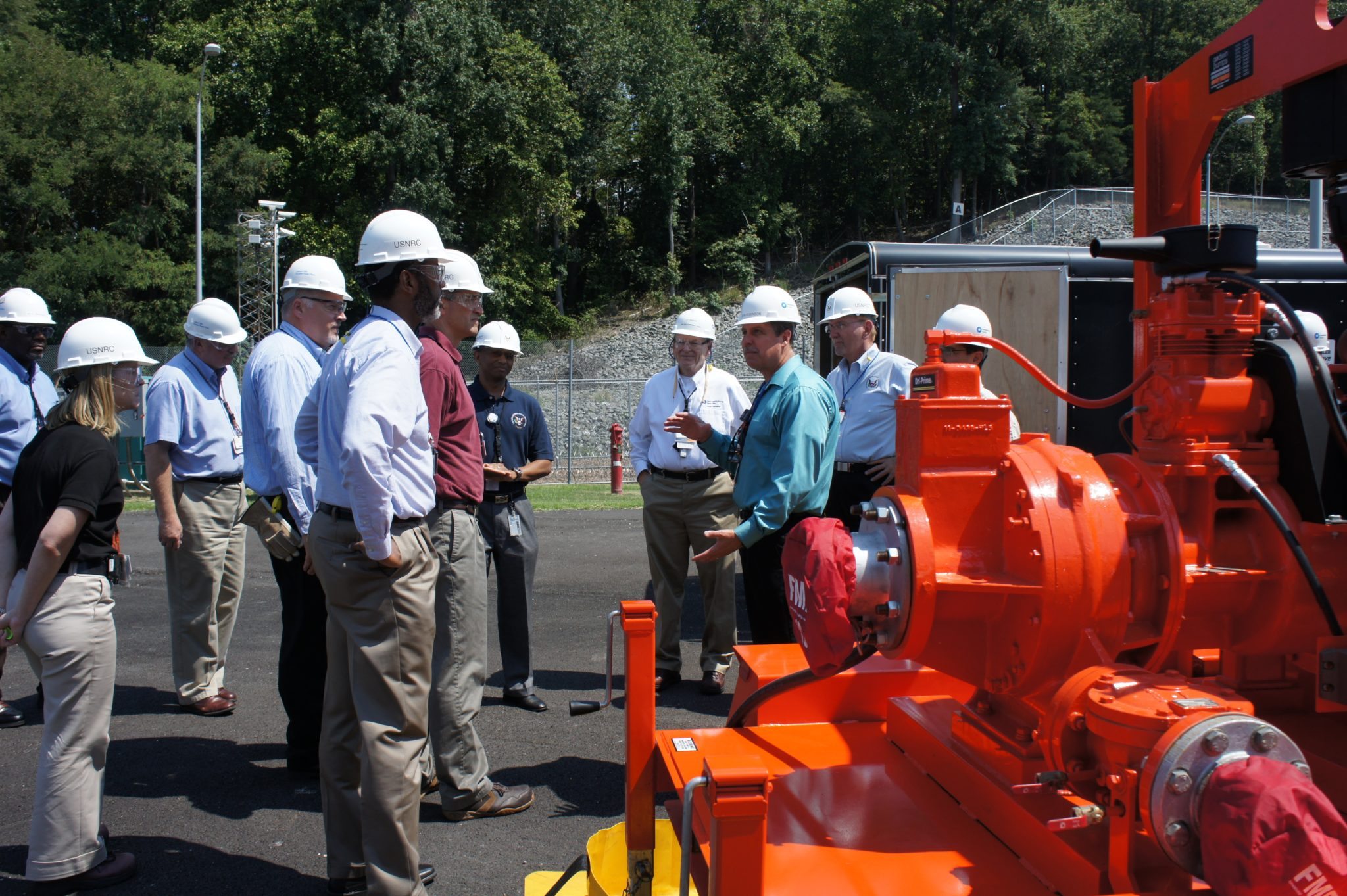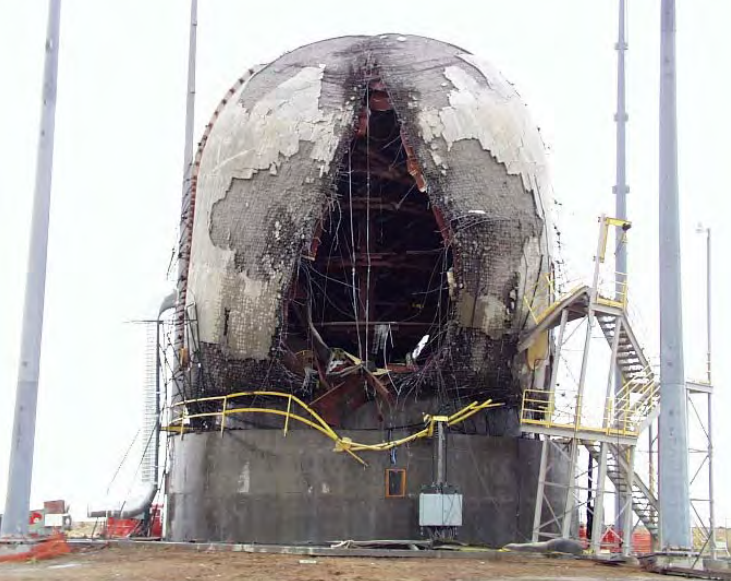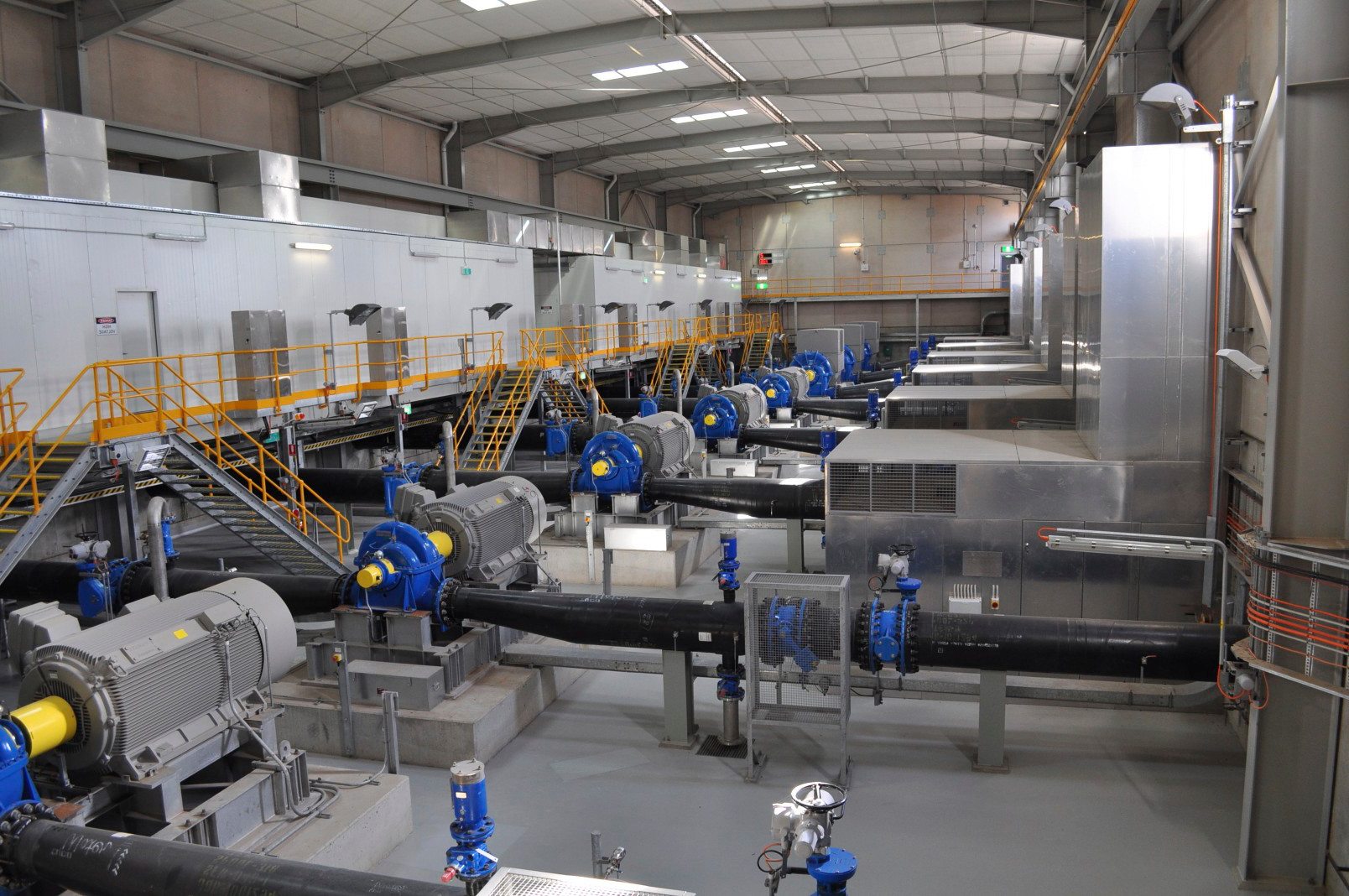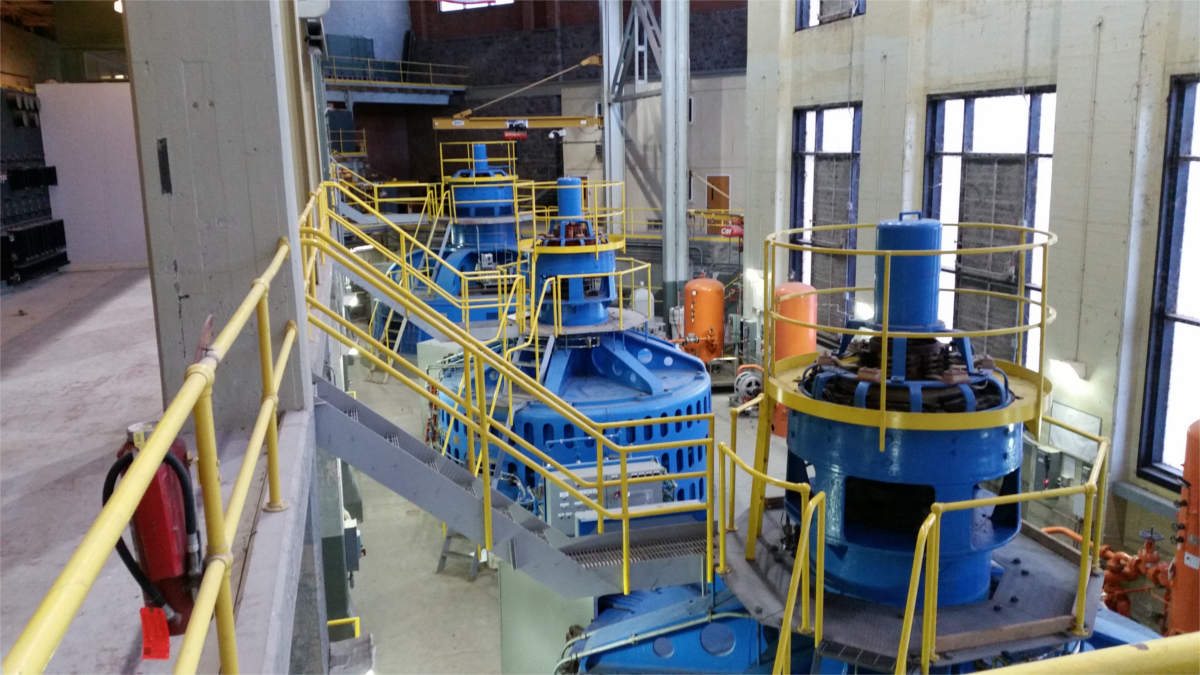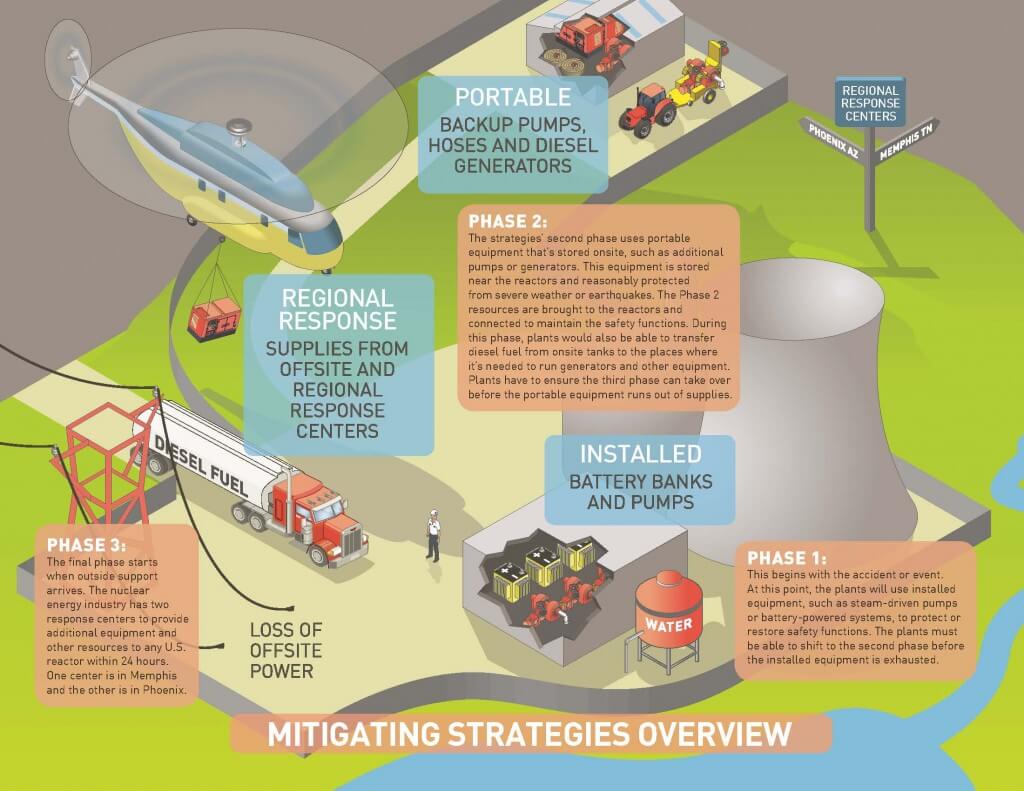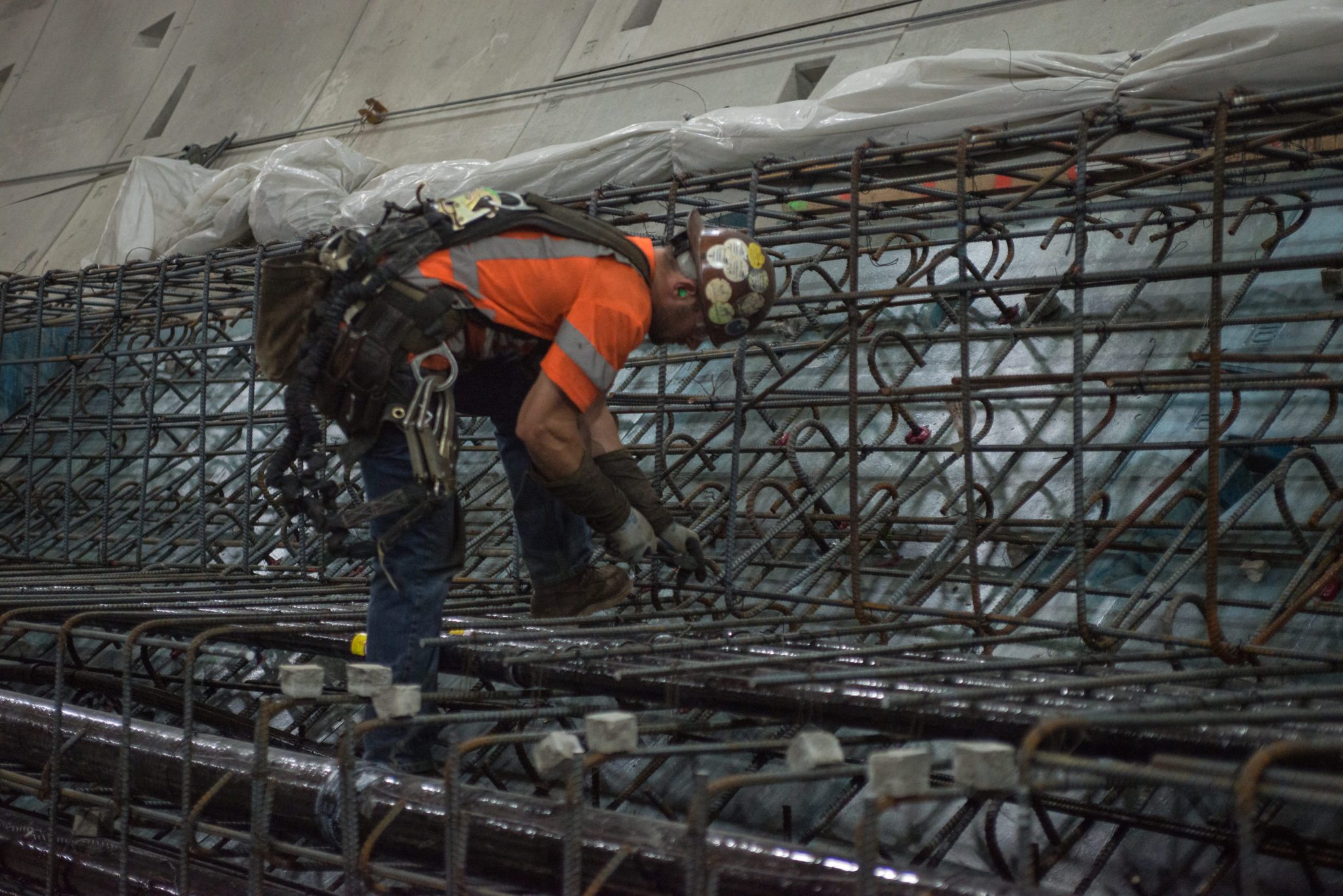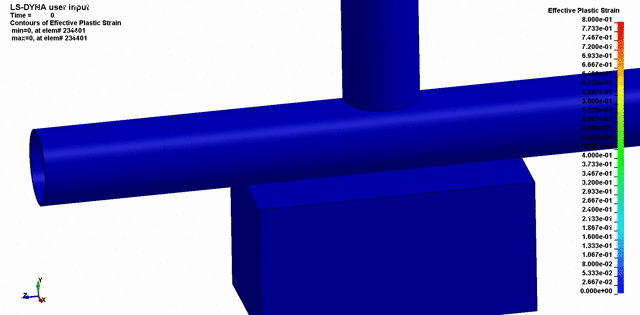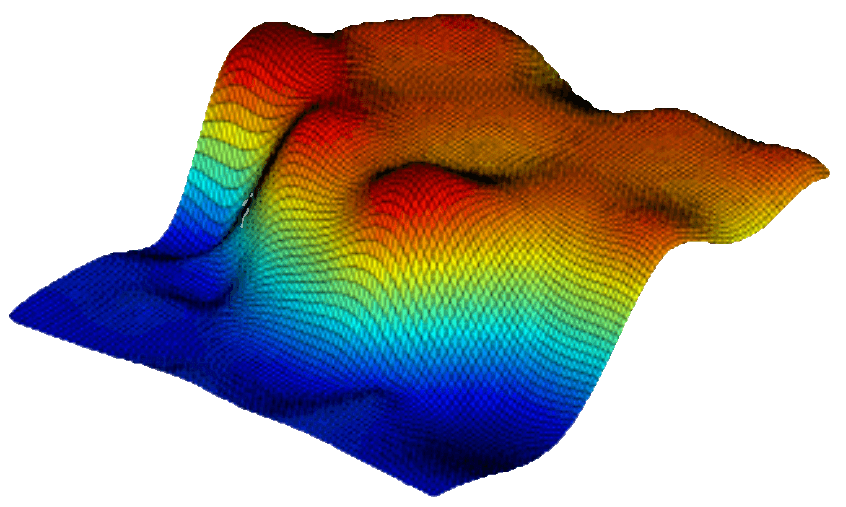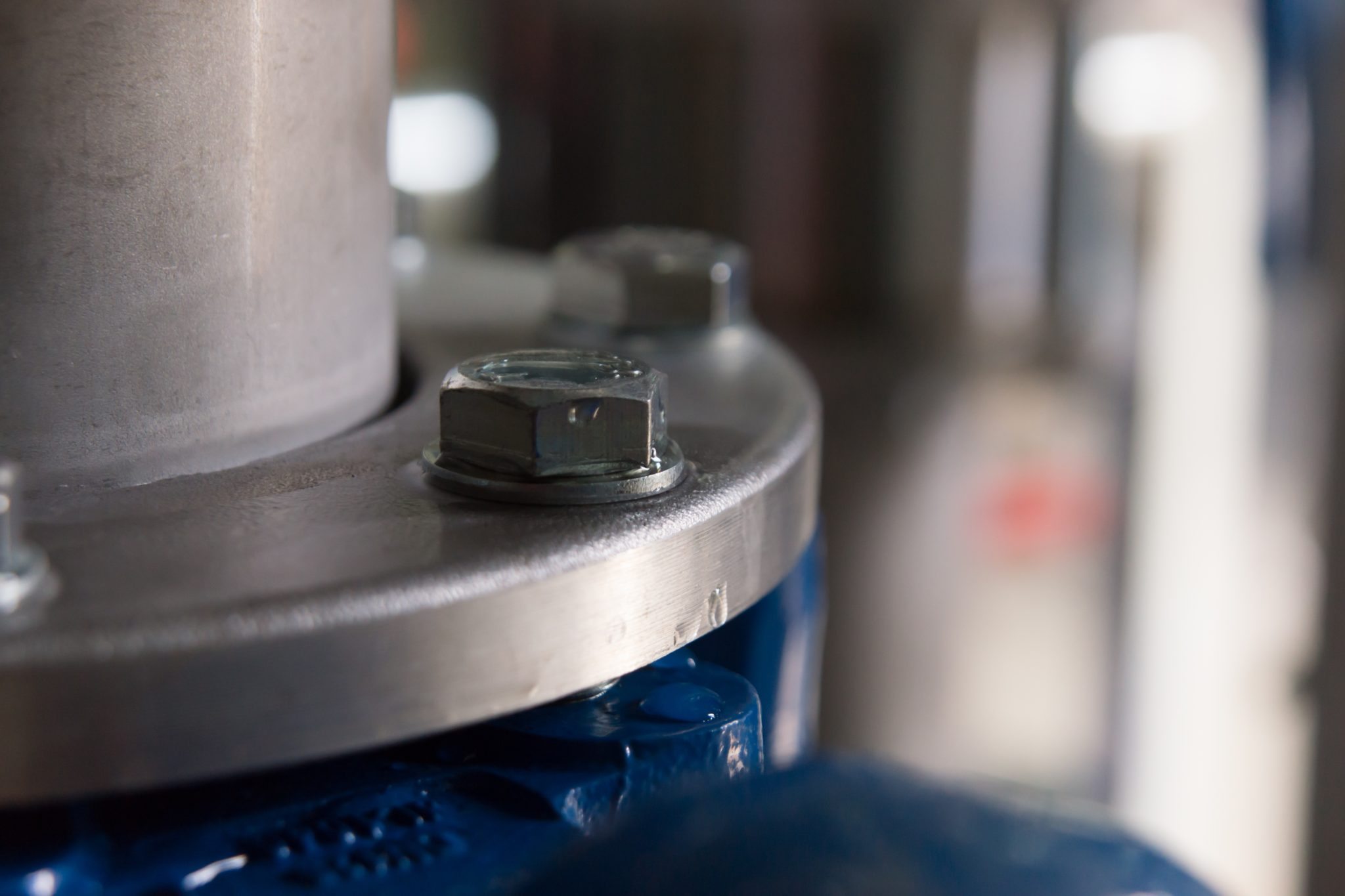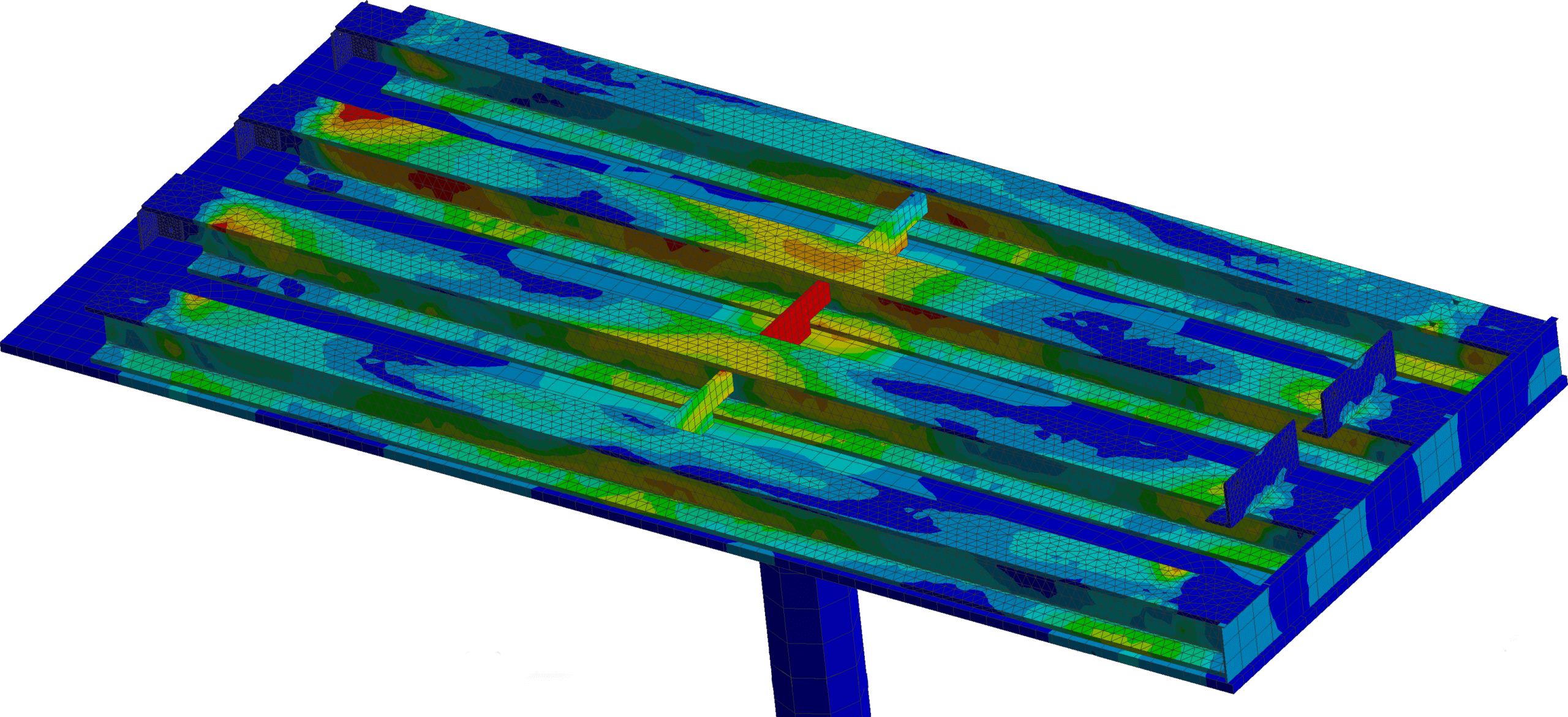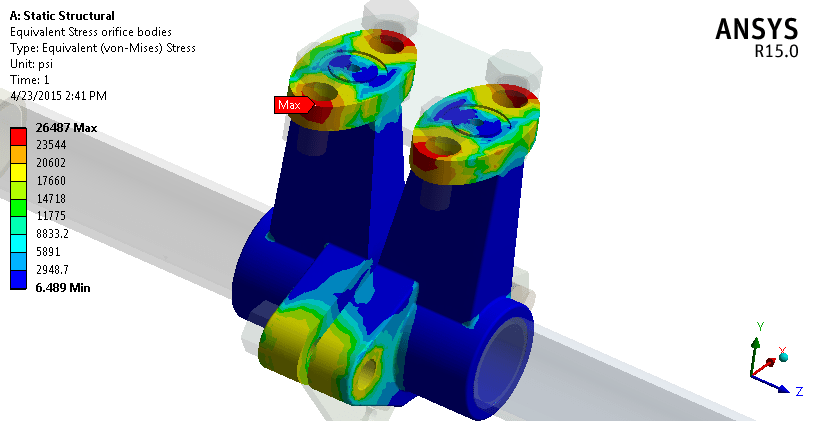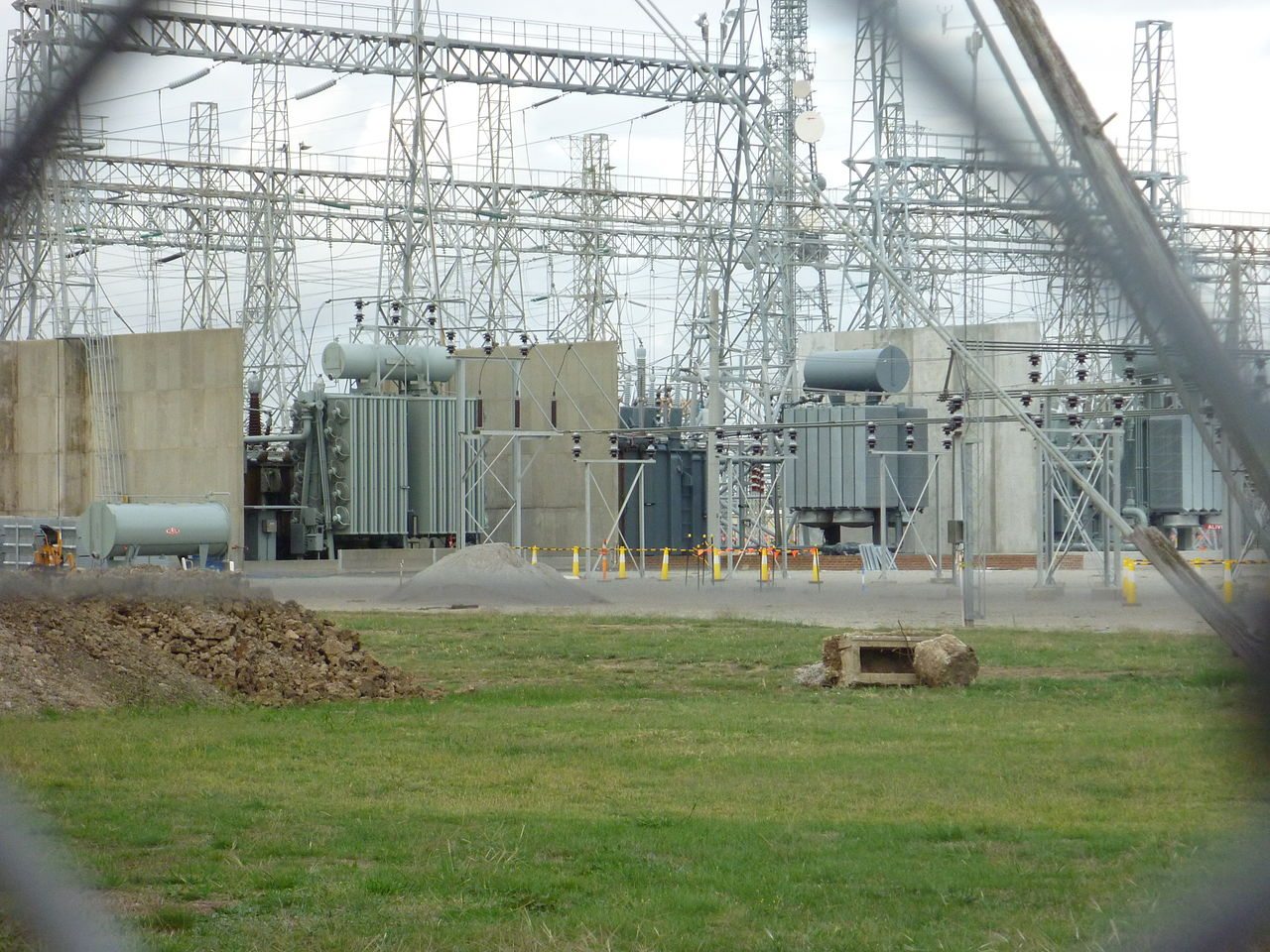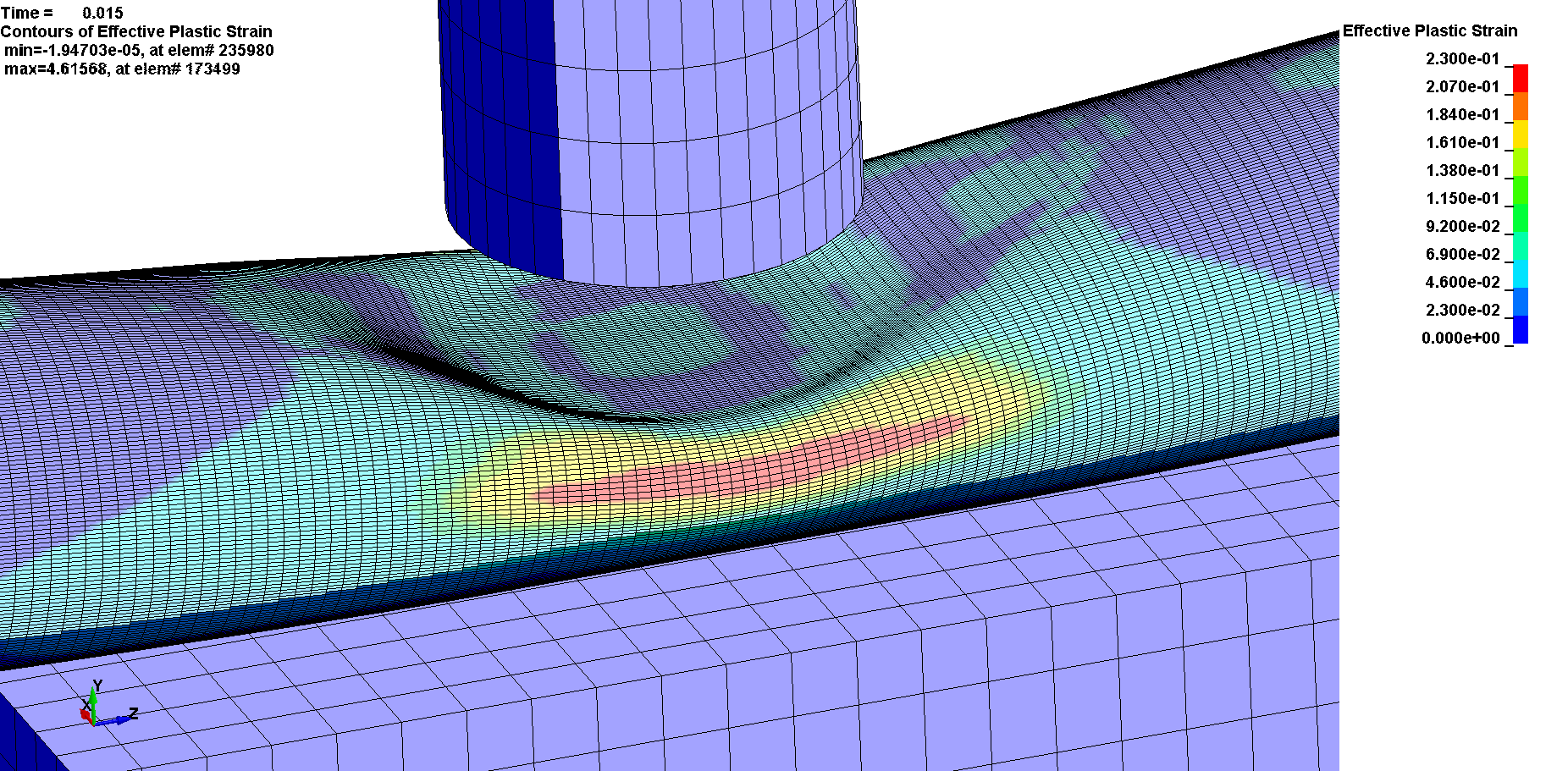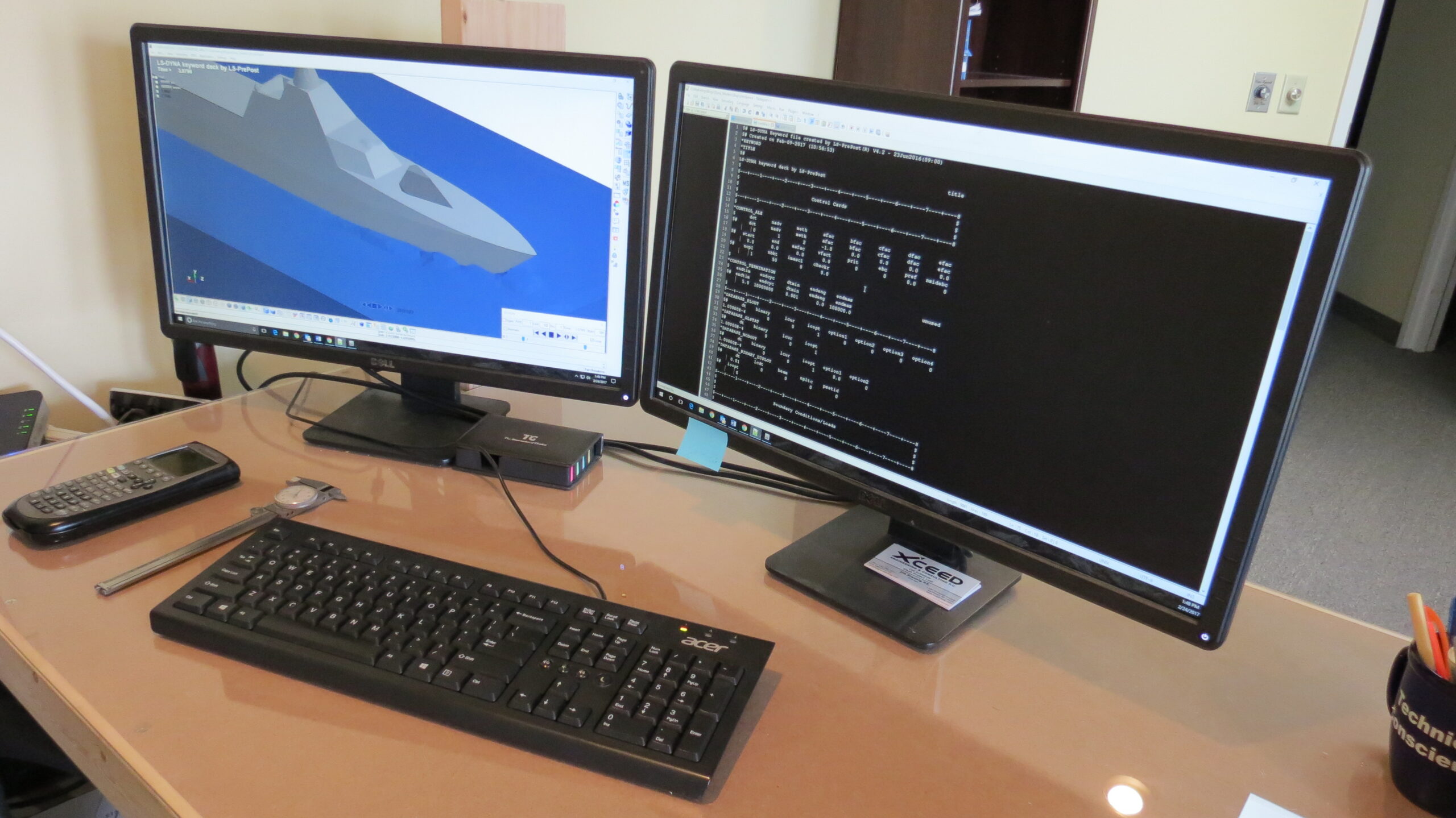Blog
Home / Blog
XCEED Engineering Blog: Solutions for Complex Projects
Understanding Thermal Expansion in Piping Systems Thermal expansion is a fundamental phenomenon in piping systems, arising whenever temperature fluctuations cause the physical dimensions of pipes ...

Finite Element Analysis (FEA) for Pumps in Compliance with API 610: Enhancing Reliability and Performance
In the world of rotating equipment, particularly centrifugal pumps used in petroleum, petrochemical, and natural gas industries, reliability isn’t optional—it’s essential. That’s where Finite Element ...
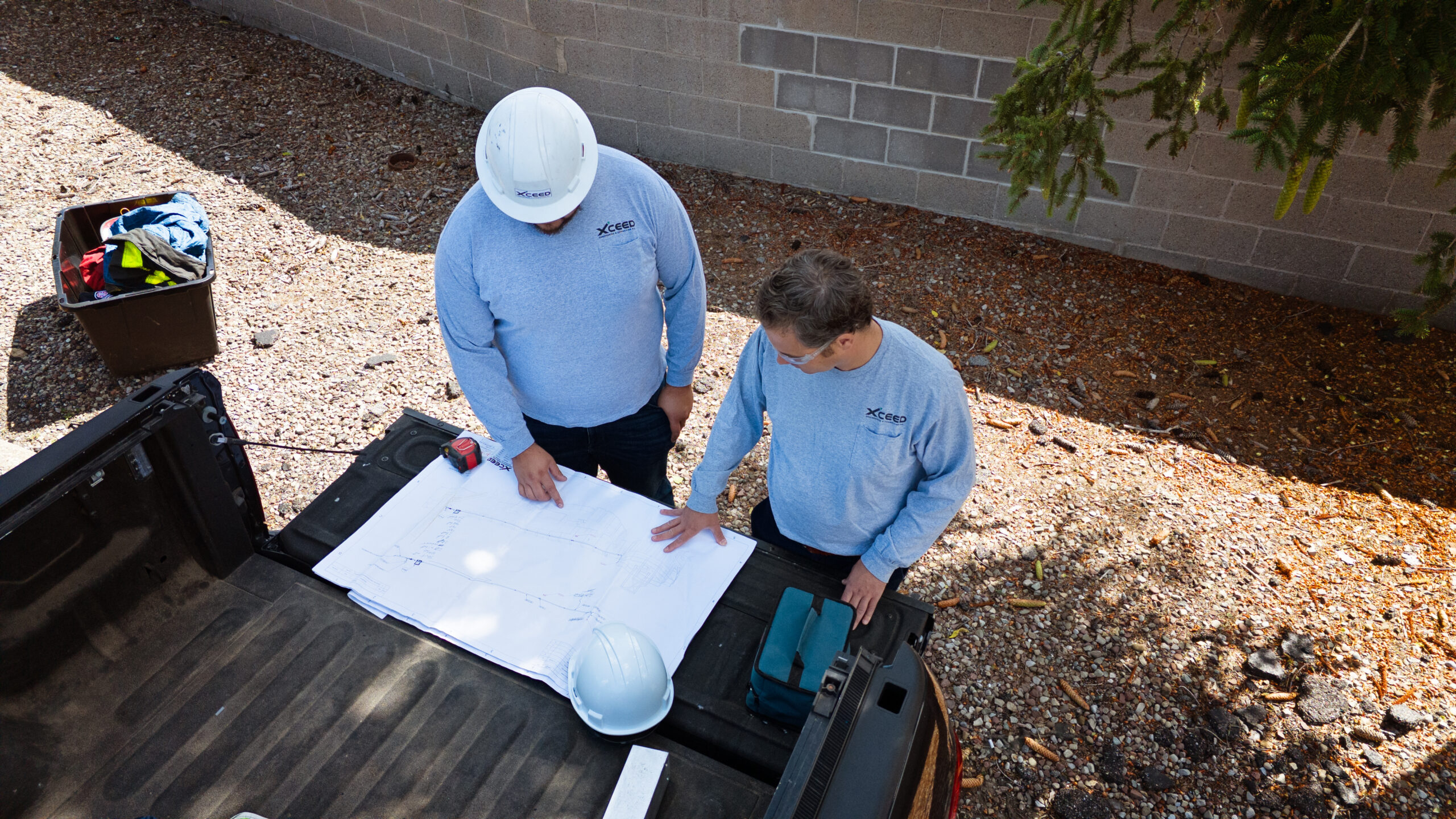
5 Common Engineering Challenges in Complex Projects—and How to Solve Them Without Breaking the Budget
When you manage a complex project or critical facility, you feel every risk in the schedule and every dollar in the budget. The work is ...
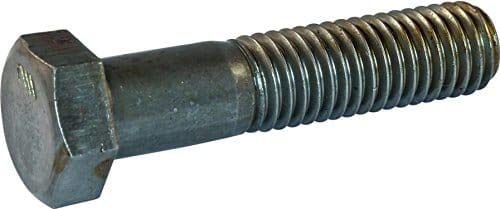
Replacement of ASTM A307 Bolts in VAMC Steam and Hot Water Piping Systems – Specification Update and Structural Safety Measures
The Department of Veterans Affairs (VA) operates 170 medical centers nationwide, serving over 8 million veterans annually. Many VA Medical Centers (VAMCs) utilize centralized steam ...
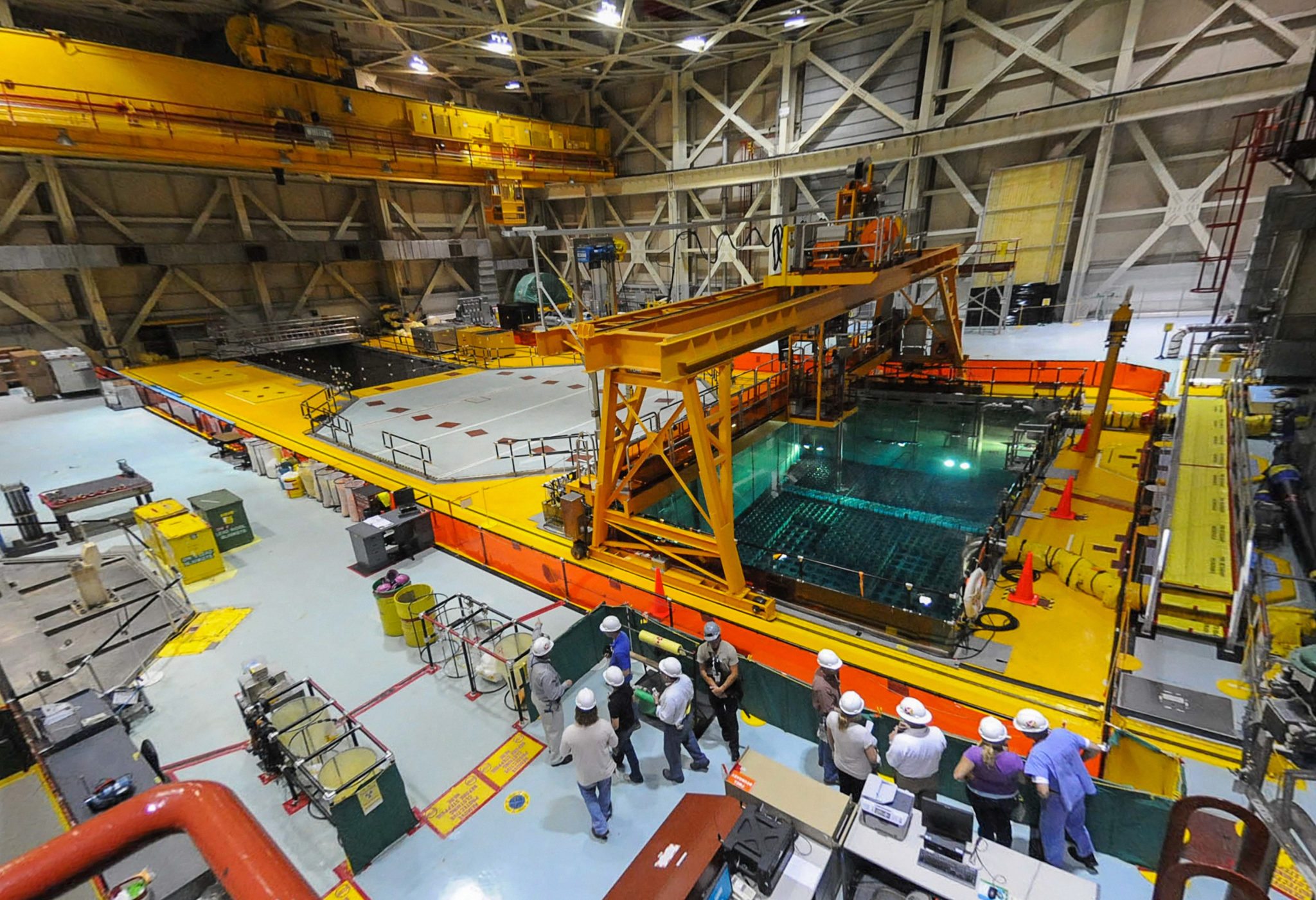
Strengthening Internal Flood Protection at Nuclear Power Plants: The Role of Pipe Inspections, Floor Drains, and Probabilistic Risk Assessment
Introduction As nuclear power plants face growing scrutiny over safety and resilience, internal flood protection has emerged as a critical focus area. While external hazards ...
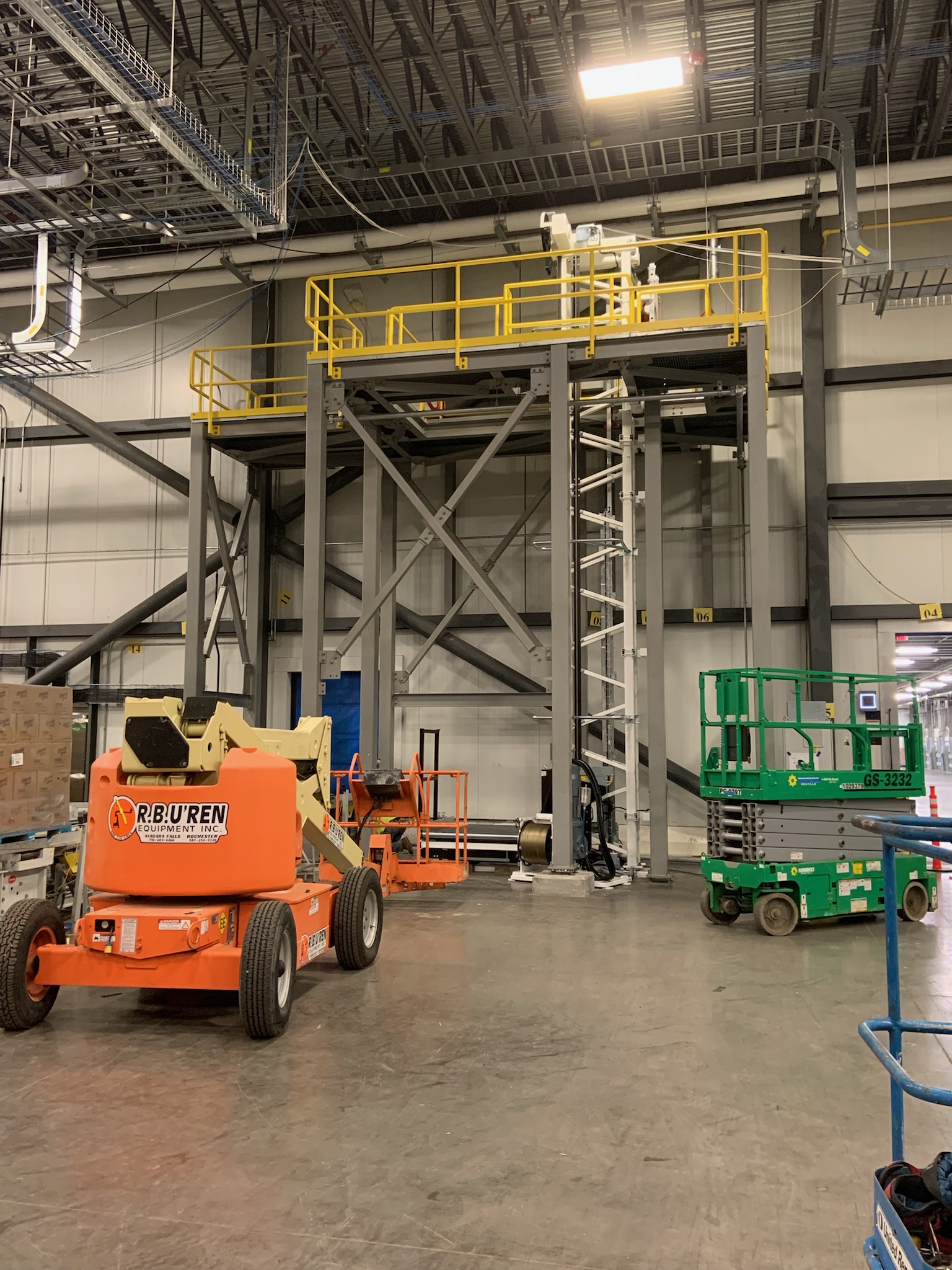
Pallet Elevator and Conveyor Structural Steel Detailing
Overview: In collaboration with a local industrial contractor, XCEED prepared comprehensive shop drawings and supporting structural calculations for the steel framework supporting a pallet elevator ...
Finite Element Analysis for Accurate Thermal Expansion Stress Assessment in Piping
Understanding Thermal Expansion in Piping Systems Thermal expansion is a fundamental phenomenon in piping systems, arising whenever temperature fluctuations cause the physical dimensions of pipes to change. As pipes are exposed to varying operational or…
Finite Element Analysis (FEA) for Pumps in Compliance with API 610: Enhancing Reliability and Performance
In the world of rotating equipment, particularly centrifugal pumps used in petroleum, petrochemical, and natural gas industries, reliability isn’t optional—it’s essential. That’s where Finite Element Analysis (FEA) comes into play. When performed in line with…
5 Common Engineering Challenges in Complex Projects—and How to Solve Them Without Breaking the Budget
When you manage a complex project or critical facility, you feel every risk in the schedule and every dollar in the budget. The work is technical, the stakeholders are demanding, and the margin for error…
Replacement of ASTM A307 Bolts in VAMC Steam and Hot Water Piping Systems – Specification Update and Structural Safety Measures
The Department of Veterans Affairs (VA) operates 170 medical centers nationwide, serving over 8 million veterans annually. Many VA Medical Centers (VAMCs) utilize centralized steam and hot water piping systems for building heating and chilled…
Flexible Connector Design with Finite Element Analysis | Simulation-Driven Engineering
🔧At Xceed, we continuously push the boundaries of industrial design — and our latest flexible connector project was no exception. The component underwent a reassessment due to updated displacement and loading requirements. Flexible connectors are…
Demystifying Finite Element Analysis (FEA) Post 2
Part 2: The FEA Workflow – From CAD to Simulation IntroductionIn Part 1, we introduced Finite Element Analysis (FEA) as a powerful computational tool used to predict how products behave under real-world forces, heat, vibration,…
Demystifying Finite Element Analysis (FEA) Part 1
Part 1: The Fundamentals Every Engineer Should Know 🧭 Introduction In engineering, the bridge between imagination and reality is analysis. It’s what turns a concept on a whiteboard into a functioning aircraft wing, or a…
Strengthening Internal Flood Protection at Nuclear Power Plants: The Role of Pipe Inspections, Floor Drains, and Probabilistic Risk Assessment
Introduction As nuclear power plants face growing scrutiny over safety and resilience, internal flood protection has emerged as a critical focus area. While external hazards like seismic events and hurricanes often capture public and regulatory…
Pallet Elevator and Conveyor Structural Steel Detailing
Overview: In collaboration with a local industrial contractor, XCEED prepared comprehensive shop drawings and supporting structural calculations for the steel framework supporting a pallet elevator and conveyor system. The detailing scope included accommodating manufacturer-specified equipment…
Modular Platform Design
A research institution required a modular, hand-assembled maintenance platform to service a component that is accessed only infrequently. The design challenge included the need for a large central opening and the ability to adapt to…
Large Ballast Tank (LBT) Enhancements
Overview: The Large Ballast Tank (LBT) serves as a surge volume for off gas from a critical refrigeration cycle. The temperature of the outdoor tank is closely linked to the system pressure, and variations in…
Double Wall Piping System for Deuterium Gas
Project Overview: XCEED developed, designed, and analyzed a double wall piping system specifically for the safe transport of deuterium gas. This system was crucial for ensuring the integrity and safety of the gas handling processes…
Helium Covergas System Enhancement [Blower Replacement]
Helium Covergas System Enhancement Overview: A research facility uses helium covergas to minimize contamination of the process fluid. The existing system, a vintage 1960s circulating blower system, was deemed outdated and inefficient. Investigation and Technology…
Custom Tool Design and Fabrication
Custom Tools A tool is a device or handheld implement that aids in accomplishing a task. When tasks become complex, the tools available at your local hardware store may not be the best choice. XCEED works…
Why Outsource Finite Element Analysis? 5 Reasons to Outsource FEA Consulting
Finite Element Analysis (FEA) is an irreplaceable analysis tool in today’s design process. In the last five to ten years, FEA has emerged as the go-to method to interrogate, test, and perfect designs before physical…
Streamlined Structural Design, Fabrication and Installation – 9 Best Practices
Erecting or renovating a steel structure in the modern era typically involves multiple contracted organizations all working together off one set of design drawings. The Engineer, Fabricator, and Contractor hash out design details in a…
Finite Element Analysis and the Missing Mass
Explicit FEA software is a powerful tool to model dynamic structures and transient loading. They are, time-consuming and difficult to troubleshoot. Often, FEA engineers apply simplifications to reduce model size computational expense. It’s essential…
TI 2515 193 HCVS and SAWM Inspection
TI 2515 193 HCVS and SAWM Inspection It’s been seven years since the Fukushima Daiichi Nuclear Disaster. Since then, US Boiling Water Reactors (BWRs) have installed Hardened Containment Vent Systems (HCVS) and implemented Severe…
5 Tips to Being a Successful Engineer
We've looked at dozens of top performers in the engineering field, and gathered these top 5 tips for becoming a successful engineer.
Blast Resistant Building Design With Finite Element Analysis
Explosive hazards are prevalent in many industries. The source of these explosions can be accidental or malevolent. Regardless, site personnel need protection from these hazards. Blast-resistant buildings shield workers and critical assets from blast effects.…
Tornado Missile Evaluator Tips
Evaluating Tornado Missiles for RIS 2015-06? We’re going to help make it a little more intuitive. Tornado strikes might not be as bad as you once thought.
Using Symmetry To Reduce FEA Runtime
Most structures and their loads are symmetric. In these cases it's possible to take advantage of symmetry to simplify your Finite Element Analysis and reduce run time. In this blog we'll: Discuss benefits of using…
Tornado Missile Calculators
Looking for a quick way to find if something will survive a tornado missile strike? Try these calculators for either concrete or steel.
Modeling Bolted Connections Under External Load with Finite Element Analysis
In last week's blog, we discussed the science behind bolted connections. Specifically their response when subjected to a combined external load and preload. In this blog we'll work through the application of bolted joint science…
Bolted Connections Are Not as Simple As They Seem
You can see them just about everywhere you look. From massive structural steel joints that make up the Golden Gate Bridge to the intricate inner workings of an antique swiss watch, bolted connections dominate our…
Is a Skid System Right for You?
Process systems are getting more and more complex, and operators are demanding increased reliability. The increased complexity and reliability needs have to be balanced by budget constraints. In this blog, we go over some of…
Top 5 Apps for Engineers
Engineering doesn’t just take place at your desk anymore. Whether it’s in meetings, in the field, or on the road, you have work to do. That’s why we’ve listed the top 5 apps for that…
Can The Nuclear Promise Save Nuclear Power?
Back in December of 2015, the Nuclear Industry kicked off an initiative called Delivering the Nuclear Promise. Headed by NEI and industry leaders, the goal is to help reduce operating costs. Nuclear plants have felt the…
The Governing Code – Things Are Not Always as They Seem
Sometimes the hardest part of a project is answering the question “What is it?” and the immediate follow-up “What is the governing code?” The governing code and its requirements can have a big impact on…
Stress Analysis in Pipes According to ASME Standards can Lead to Safer Pipe Designs
Putting in the simplest form, analysis is just the simplification of real world to an engineer, with a measure of how much assumption is put in the analysis process. Lesser the assumptions; more accurate and…
FEA Simulation: How to Use Shell Element Results to Improve Design
Using structural shell elements in finite element analyses saves computational time when analyzing thin-walled parts and structures. But engineers and analysts require experience to best utilize the output. Unlike solid elements, where stresses are typically…
Print That Part
Spare parts management is a complicated, laborious - but critically important - aspect of nuclear plant operation. Ensuring that the right part is available at the right time and the right place requires detailed inventory…
Uses for the Ubiquitous Retaining Ring
When engineers think of fasteners, they usually think along traditional lines: screws, nuts, bolts, cotter pins and washers, rivets, etc. But if these same engineers are tasked with reducing costs, they look outside of their…
Bone-Breaking Predictions Put to the Test with FEA
Pound on a bone with enough force and it’ll break. Just where, though, depends on whether or not bone behaves like other structural materials. Researchers have long guessed it did—but they didn’t really know. Bone…
FEA: Only As Good As the Operator
Modeling how products, buildings, and structures hold up under everyday use involves solving intractable partial differential equations that calculate stresses under myriad loads. Using FEA is sometimes the only solution, but as always, the tool…
FEA and the Question of Credibility
FEA is a digital way to test designs against predictable forces, to determine whether a design will fail and, if so, when and how the material will deform, snap, or collapse. As a central part…
Fitness for Service Assessments
Once commissioned tanks, pipes and pressure vessels begin to corrode. Periodic inspections identify degraded regions. Engineers then assess the reduced safety margins and determine if repairs are necessary. This process is known as a Fitness…
Learning about Teamwork and Success from High School Students
When I volunteered to judge the Finger lakes FIRST Robotics competition, I had no idea how much I was about to learn about business, and about how strongly teamwork correlates to success.
Finite Element Analysis Convergence and Mesh Independence
It's a battle as old as Finite Element Analysis. How do you achieve accurate results while balancing size and solve time of a FEA model? Simple models may solve quickly, but are the results accurate?…
Finite Element Analysis Verification
Finite Element Analysis (FEA) is a powerful tool for evaluating complex structural problems. Like all analytical software, bad results stem from bad input. We call it the "Garbage in, Garbage Out" principle of FEA. Sometimes,…
Pressure Testing
Pressure testing ensures that tanks, vessels and piping systems, are correctly constructed. Testing ensures the integrity of flanged joints and threaded connections. In this week's blog we'll provide an overview of: objectives of pressure testing,…
TI-2515/191 Inspection Preparation
FLEX compliance can be a challenging inspection for your site. The NRC will typically send a few inspectors, and the inspection will last the better part of a week. During that time, the NRC is…
Wayback Wednesday: Sandia Containment Testing and FEA
The amount of time and effort that goes into making sure that nuclear plants safe is incredible. In the early 80s, Sandia National Labs (SNL) and Argonne National Labs (ANL) started a testing program for…
Preventing Fatigue Failure
Pumps and compressors vibrate. It’s a natural phenomena for anything that rotates or reciprocates, and it’s unavoidable. Normally, it’s not a problem. Until the vibrations hit resonance. When you have a pump or system operating…
5 Reasons To Use FEA Over Drop Testing
FEA Drop Tests Today, more and more manufacturers are switching to analytical drop tests before anything goes into production. This helps save time and money, getting your products to market faster, but there’s more than…
Collaboration: The Nuclear Industry User Group
The User Group What’s the best way to get the nuclear industry’s best minds together to discuss trends and solutions? Form a User’s Group! The Nuclear Industry has formed a number of user groups because…
Nuclear Reactor Refueling
We often get asked, "How do you refuel a Nuclear Reactor?". It seems daunting, considering that the fuel is radioactive, and you certainly can't touch it!
Shipping Container Impact Analysis
We can perform impact analyses in lieu of drop tests to verify structural integrity. This is an example of a dropped shipping container.
RGE Hydroelectric Station 5 Turns 100 This Year!
RG&E's Station 5 will have generated green, emission free energy for 100 years this year. That's quite an accomplishment.
Crash Test Tuesday: Geo Vs. Chevy C2500
We thought it’d be fun to showcase some of our tools using a new series we call Crash Test Tuesday. This week, we’re going to start with a simple car crash. Who do you think…
FLEX – Making Plants Safer Than Ever Before
FLEX is incredibly powerful because the equipment can be used for any disaster that might face a nuclear plant. Even the disasters that we can't think of right now.
Articulating Solar Array
We were able to help our client save over $40,000 on the design and construction of an articulating solar array.
Don’t Forget the Contractor – Preventing Costly Construction Delays
One of the most important things to consider in design is how it will be installed. We find that accounting for the installer allows projects to get installed faster, and with less issues.
Even the Best Designs Can Have…Shortfalls
Even the best designs can have shortfalls. For example, this roof scupper is supposed to carry runoff to the drainage basin below; problem is... It Doesn't!
Failure Analysis
Failures Happen, Learn from Them If you’ve made it here, something probably went wrong. And you don’t want it to happen again. Failure is sometimes inevitable. All we can do is learn from it and…
Engineering Consulting
The Return on Investment of using an engineering consulting firm is in the form of a better final product. In our case, we focus on reducing project cost and project schedule. A small investment up-front…
Design Analysis
Design is where science meets art. Many people think of engineering design as math and science, but really, the design is where the solution takes shape. Math and science are merely used to back up…
Condensate and Feedwater Upgrade
After an Extended Power Uprate (EPU), a power plant was having problems with Net Positive Suction Head (NPSH) on the Feedwater Pumps. They were worried about damaging the pump, but they also didn't want to…
Ballistic Testing
Normally, we can test impacts using FEA. In this case, FEA wasn't feasible, so we built a test stand to test missile impacts on block walls.
Tank Impact Evaluation
We found that API-650 tanks are more robust than most expect. The water in this tank absorbed 30% of the energy of a truck going 93 mph!
Trenchless Pipe Rehabilitation
Eventually, most steel rusts. And most buried pipes are made from steel. So what do you do when your buried pipe gets rusty? What if the pipe leaked?
Check Valve Failure Analysis
We diagnosed the failure of a nozzle check valve in an Auxiliary Feedwater System at a power plant. In summary: great valve, wrong application.
Fukushima FLEX Compliance Matrices
We have helped sites prepare for their TI-2515/191 inspections by using a tool we call the Compliance Matrix. Give us a call for more information.
Tornado Missile Barriers
A nuclear plant found that they needed to protect pipes from wind driven missiles. We designed a barrier system for them using 3D modeling and FEA.
RCP Seal Leakoff
Using FEA and hand calculations, we were able to help a nuclear utility evaluate RCP Seal Leakoff pipes and components for high temperature and pressure.
Transformer Foundation Design
We worked with a local utility to help design a foundation for a transformer. The design included the spill basin for transformer oil.
Flood Penetration Qualification
We developed a testing plan to test seals and determine their water resistance. A test rig was designed which put a static head on the sample flood seals.
Missile Barrier Design Review
We worked with a nuclear plant to optimize a shear wall design. The optimized design reduced the amount of rebar by about 30%.
Steam Pipe Integrity Evaluation
Tornado generated missiles can wreak havoc, especially on a nuclear power plant. We helped one site design and optimize a protection system.
Experienced CFD and FEA Consultants
Our CFD and FEA Consultants Experience At XCEED, our FEA consultants have over 20 years of experience using solving some of the toughest problems in the world. We started using FEA in the nuclear industry,…



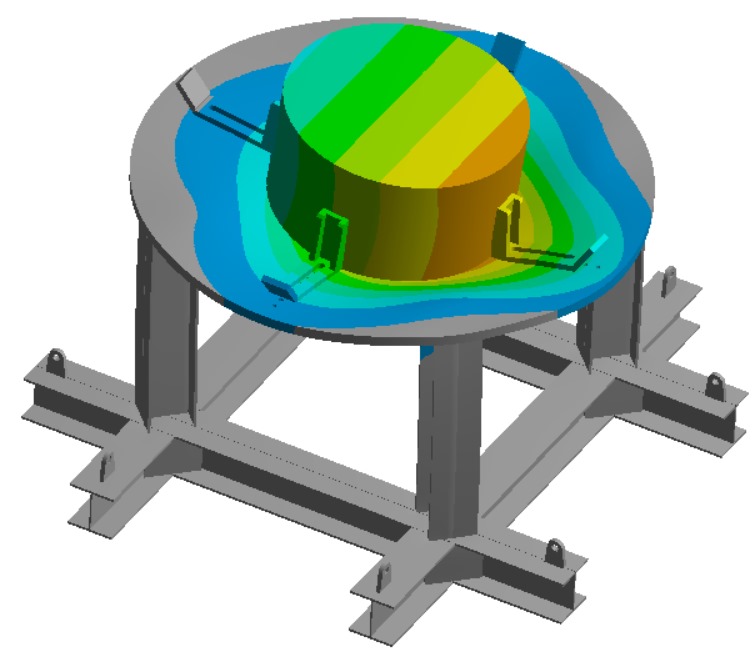
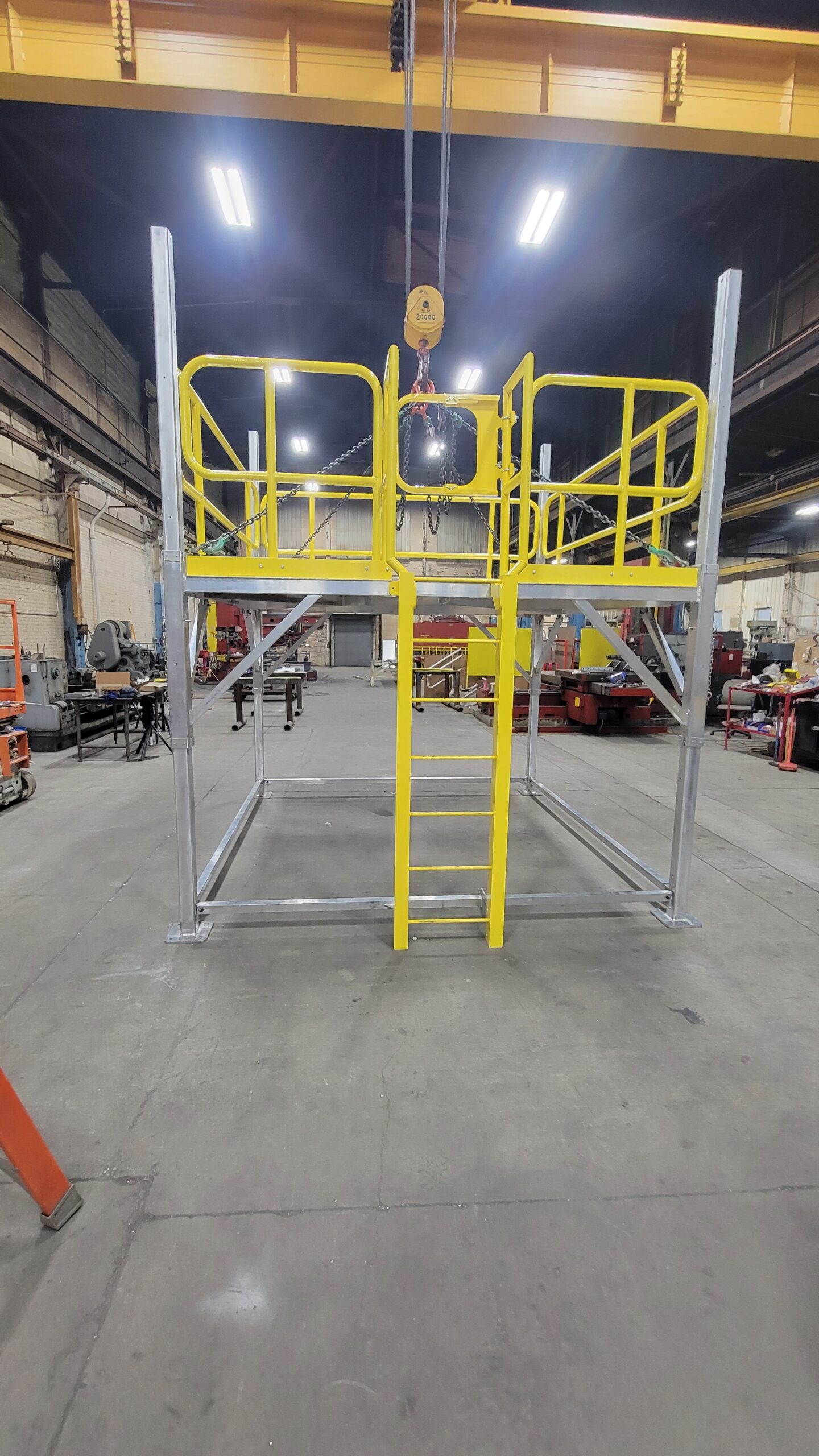
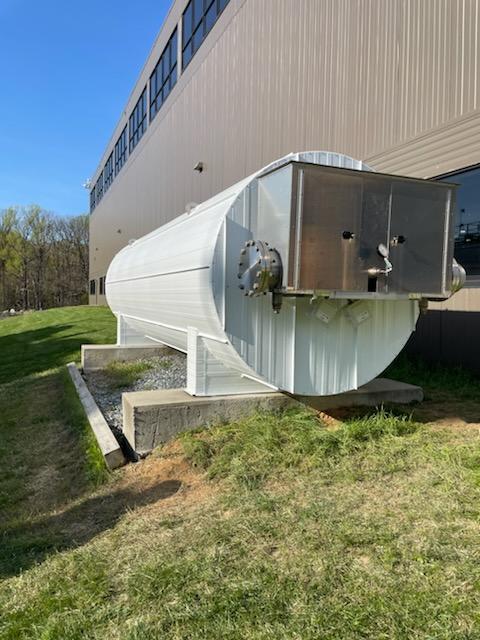
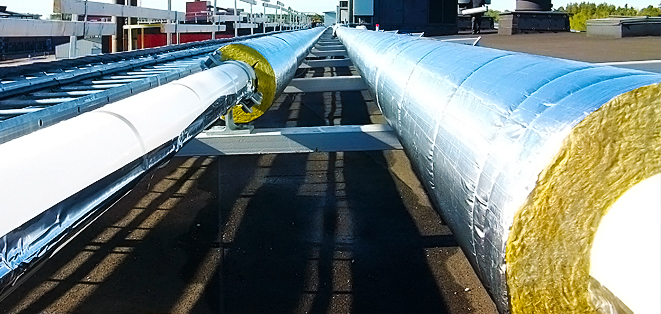
![Helium Covergas System Enhancement [Blower Replacement]](https://xceed-engineering-v1764111894.websitepro-cdn.com/wp-content/uploads/2025/04/types-of-oil-and-gas-pipelines-1200x628-1.jpg)


